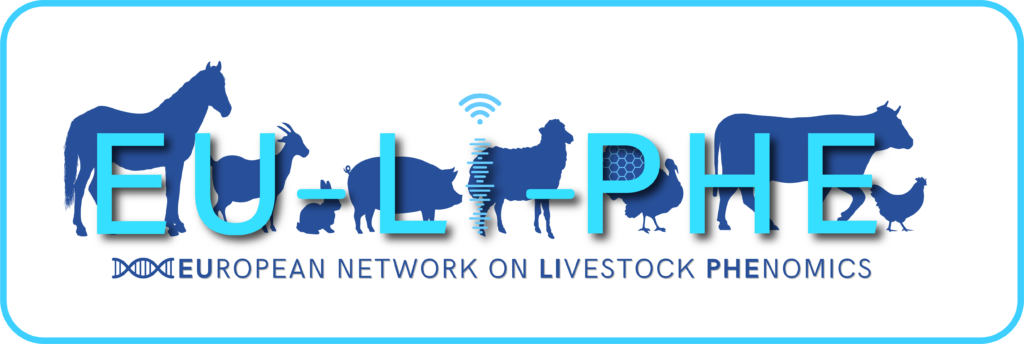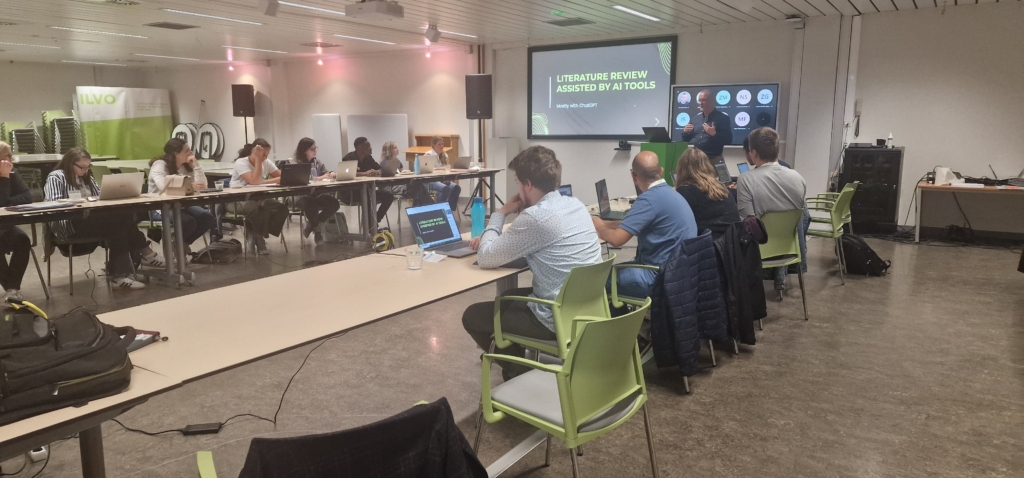A phenotype is defined as an organism’s outer appearance or visible traits. For humans, that would be, for example, height, eye color, or length of an index finger. Regarding livestock species, we refer to traits such as milk production, movement patterns, behavioral changes, and body fat composition. These and many other characteristics are studied in a currently emerging discipline of phenomics – a field of science that aims to gather the methodologies and technologies for acquiring, analysing, and exploiting high-dimensional phenotypic data on target livestock species, while using the principles of complex genetics.
Livestock phenomics is not just a fertile research area, its societal impact is multifold. Apart from improvements in animal breeding and selection, phenomics is an asset in increasing production efficiency, enhancing animal health and overall welfare, and reducing the environmental impact of the animal production industry. Livestock phenomics is established upon general scientific principles which enable it to closely connect with fields such as aquaculture and insect diversity protection.
Advancing livestock phenomics
Innovative technologies are improving the livestock industry, with the final objective of designing sustainable animal production systems. These advancements have significantly contributed to the enhancement of livestock populations. However, continued progress is necessary to refine species-specific genome tools and resources and broaden their applications.
Despite the recent developments in sensor technologies, certain aspects of animal phenomes remain challenging to capture. Some data points are either too costly or time-intensive to measure accurately. Addressing these gaps will be crucial for fully exploring the potential of these new technologies in animal health. Developing the application of phenomics in livestock requires multi-disciplinary and multi-actor approaches to bring together different expertise, resources, and expectations. Such collaboration will enable the livestock production sector to project a comprehensive vision for the next 30 years.
To address the complex scientific, technical, and societal challenges within the field of livestock phenomics, there was a pressing need to establish a European-based network. This network will be pivotal in responding to these multifaceted issues effectively.
Introducing EU-LI-PHE COST Action

EU-LI-PHE COST Action, which stands for European Network on Livestock Phenomics was established to foster the development, integration, organisation, and practical implementation of technologies, tools, methods, approaches, models, expertise, and resources useful to scan and interpret the animal phenome. Launched in September 2023, with more than 35 countries represented, the network is now fully up and running and structured in five working groups. The network is investigating phenotyping technologies; genome-phenome integration; computational resources and methodologies for data analyses; economic impact, regulations, policies, and society; and engagement with relevant national and international stakeholders and organisations, including EU bodies.
It constitutes a Europe-centered multidisciplinary, interconnected, and inclusive community of experts aimed to boost scientific collaboration, catalyse developments, and transfer livestock phenomics concepts and applications to improve the sustainability and competitiveness of the European livestock production sector.

“Our vision is to transform how phenotypes in livestock are approached, used, and considered, to pivot many novel applications in animal breeding and husbandry.”
Prof. Luca Fontanesi, University of Bologna, the Action Chair
When implemented, the results of this Action are projected to decrease the costs of the EU livestock production sector by approximately 0.1% for 10 years, starting at the end of the Action, which equals an impact of around €160 million annually.
EU-LI-PHE aims to promote the importance of phenomics in the livestock sector to the stakeholders and engage young scientists to help develop a new generation of researchers in the field. Numerous networking activities are oriented in this direction. EU-LI-PHE already organised its first training school for young researchers and innovators (YRIs), which was held in June in Belgium and covered using Artificial Intelligence and data visualisation tools in a literature review for investigating phenotyping technologies. During the annual Bologna meeting, a dedicated YRI session was held, whereby ten young scientists from all over Europe presented their research on cattle, pigs, and hens.


“EU-LI-PHE brings together many people, from all over Europe and beyond, with different backgrounds and expertise and therefore has the potential to change the research field by improving the knowledge, but also to change individual researchers’ lives and careers through exchange opportunities!” says Dr Jarissa Maselyne, ILVO Merelbeke, Working Group Vice Leader and First Training School organiser.
Stakeholder engagement, another pillar of the Action’s communication team, is continuously approached by networking with other COST Actions, including conference and symposium participation. EU-LI-PHE is currently organising its first webinar for the end of the inaugural project year and is planning an ambitious stakeholder conference next summer.
“EU-LI-PHE COST Action is all about stakeholder engagement, scientific conversation, and raising awareness since animal breeding and welfare should be everyone’s interest.” adds Dr Adna Ašić, Verlab Research Institute Sarajevo, Science Communication Coordinator and Working Group Leader.
In the long run, the EU-LI-PHE network will help to advance the understanding of animal phenomes. This network will train the next generation of animal scientists in phenomics as a big data discipline, fostering integration with other key 21st-century biological fields.
EU-LI-PHE will engage with decision-makers and the public to highlight novel innovations expected to improve food security across Europe. Additionally, by applying phenomics to livestock populations, the initiative aims to reduce the environmental impact of livestock production.
Additional information
View the Action webpage
View the Action network: https://eu-li-phe.eu/.
Follow EU-LI-PHE COST Action on Facebook; Instagram and LinkedIn
Eurostat Performance of the agricultural sector
Future of EU livestock: how to contribute to a sustainable agricultural sector
